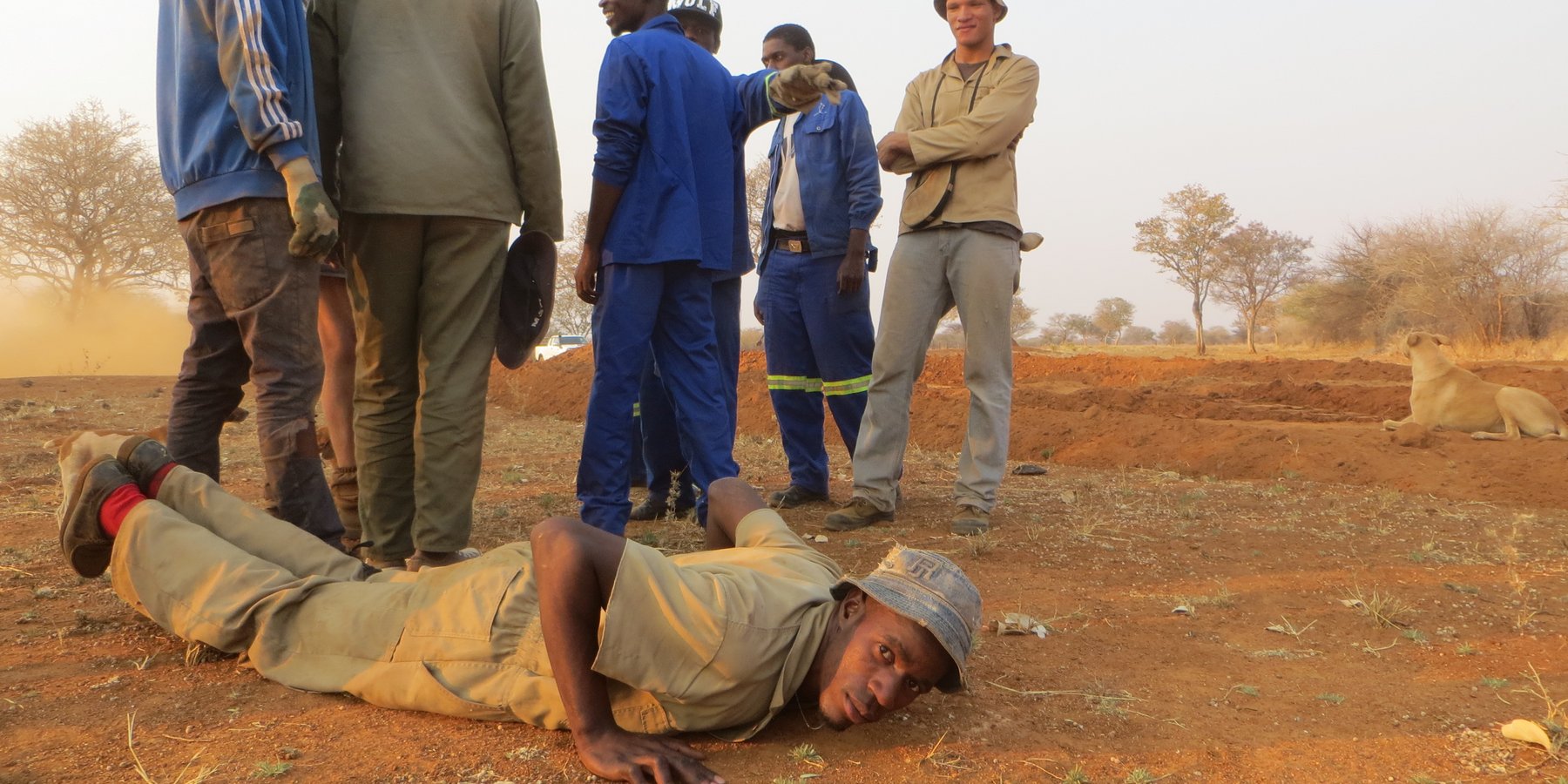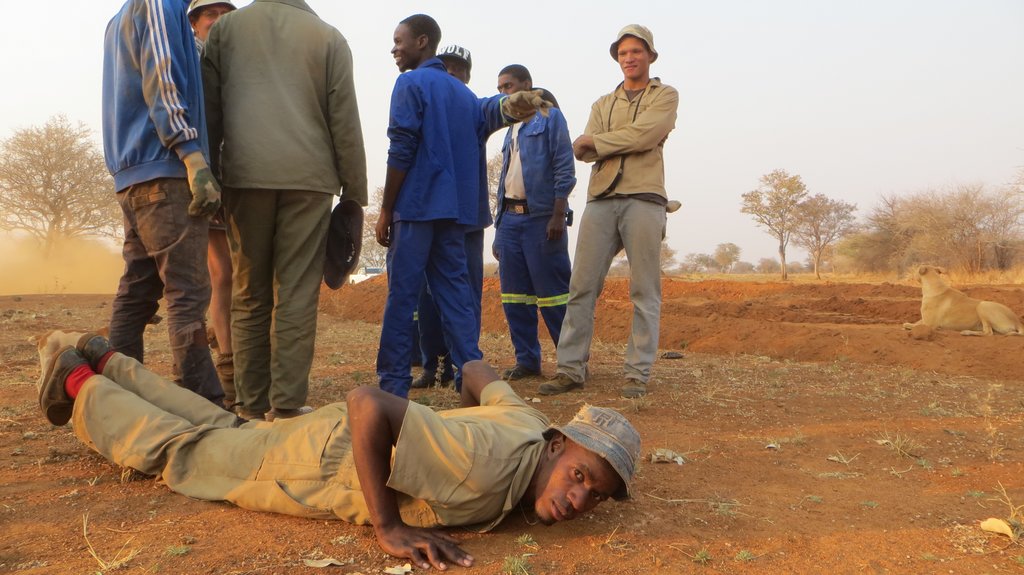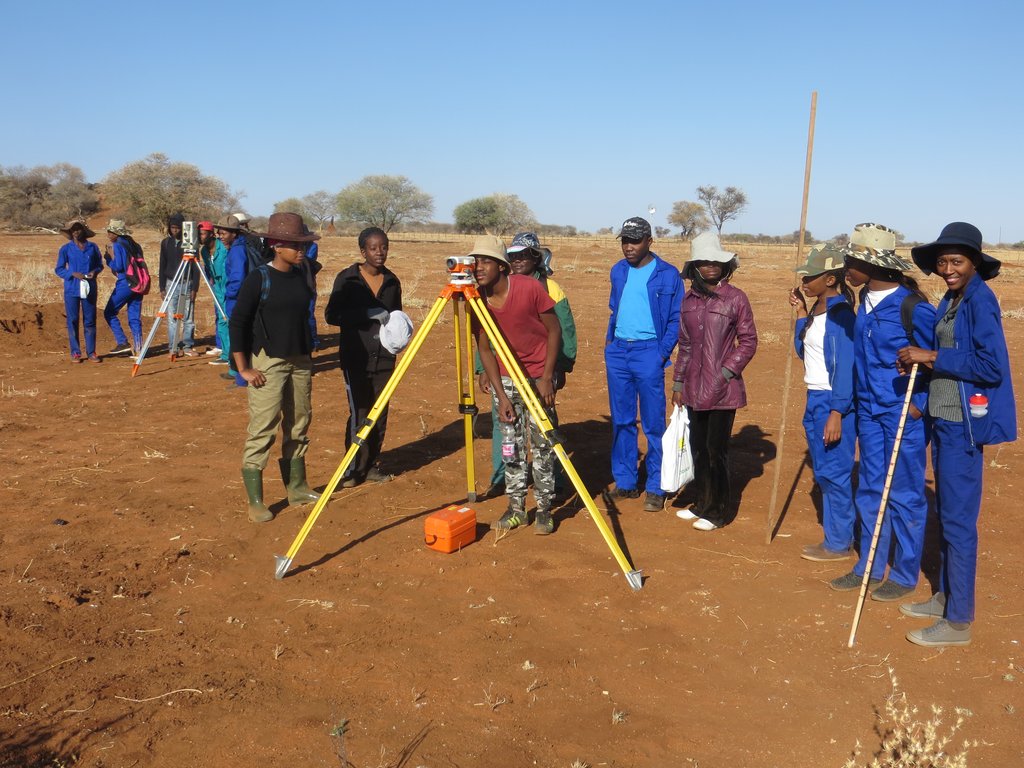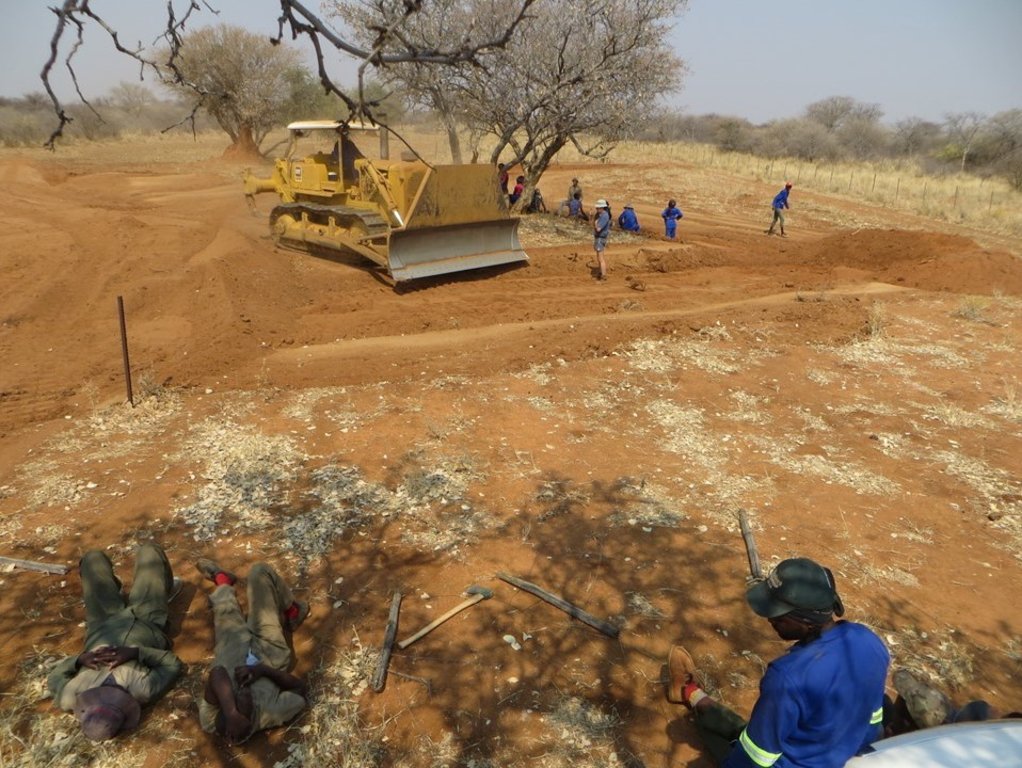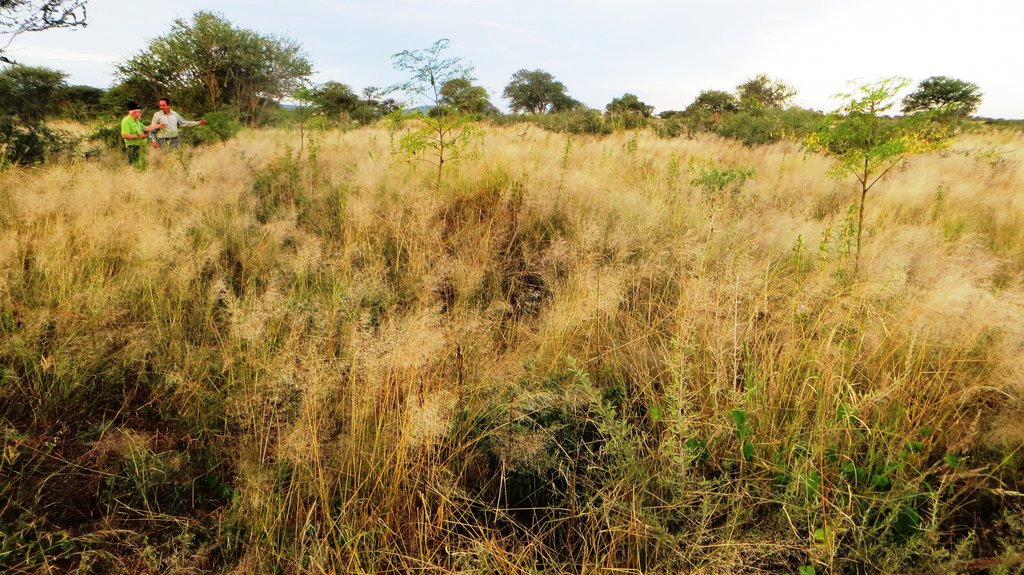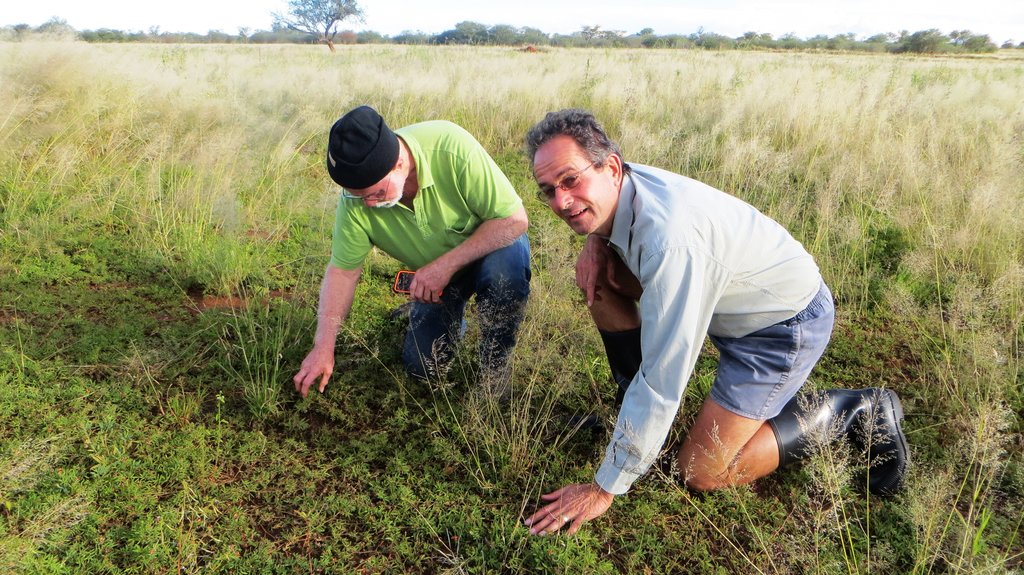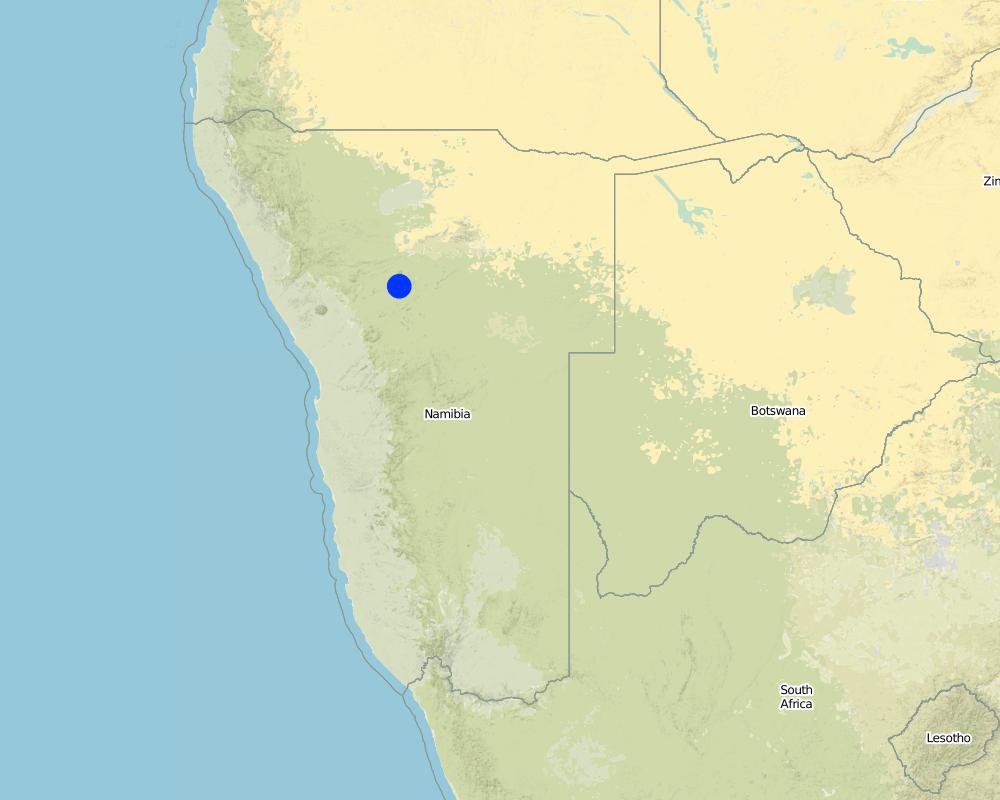Arrangements to convert degraded rangeland into fruitful landscape [ناميبيا]
- تاريخ الإنشاء:
- تحديث:
- جامع المعلومات: Ibo Zimmermann
- المحرر: –
- المُراجع: Rima Mekdaschi Studer
Otjikunino
approaches_2847 - ناميبيا
عرض الأقسام
توسيع الكل طي الكل1. معلومات عامة
1.2 تفاصيل الاتصال بالأشخاص الرئيسيين لمصدر المعلومات والمؤسسات المعنية بتقييم وتوثيق النهج
مستخدم الأرض:
Kahl Uwe
+264 67 290004 / +264811486666
uwe2008@iway.na
Farm Middelplaats
P.O. Box 213 Otjiwarongo
ناميبيا
متخصص في الإدارة المستدامة للأراضي:
Pringle Hugh
hpringle1@bigpond.com
Ecosystem Management Understanding
P.O. Box 8522 Alice Springs NT 0871
أستراليا
اسم المشروع الذي سهّل توثيق/تقييم النهج (إذا كان ذلك على صلة)
Southern African Science Service Centre for climate change and Adaptive Land management (SASSCAL)اسم المؤسسة (المؤسسات) التي سهلت توثيق/تقييم النهج (إذا كان ذلك على صلة)
Namibia University of Science and Technology ( NUST) - ناميبيااسم المؤسسة (المؤسسات) التي سهلت توثيق/تقييم النهج (إذا كان ذلك على صلة)
German Federal Ministry of Education and Research (BMBF) - ألمانيا1.3 الشروط المتعلقة باستخدام البيانات الموثقة من خلال WOCAT
متى تم تجميع البيانات (ميدانيا)؟:
2017
يوافق جامع المعلومات والشخص (لاشخاص) الرئيسي لمصدر المعلومات على الشروط المتعلقة باستخدام البيانات الموثقة من خلال WOCAT:
نعم
1.4 المراجع الخاصة باستبيان(استبيانات) تقنيات الإدارة المستدامة للأراضي
2. وصف نهج الإدارة المستدامة للأراضي
2.1 وصف موجز للنهج
Making arrangements between a commercial farmer and agriculture students to raise the productivity of rangeland by allowing harvested rainwater to infiltrate into the ground to grow multipurpose trees and bushes below contour ditches and grass above ponding banks.
2.2 وصف تفصيلي للنهج
وصف تفصيلي للنهج:
The approach formed linkages between the Namibia University of Science and Technology (NUST) and a commercial farmer to improve the efficiency of rainwater on rangeland through reducing runoff while increasing infiltration and transpiration. Its objective is to share knowledge and experiences that allow the farmer to grow valuable woody plants, grass and herbs for use by humans and by browsing and grazing animals, which students could then implement elsewhere. Since the approach is applied to parts of the rangeland that experience high runoff, one of the first stages of implementation is to address the root causes of erosion if not already in place. This could be through sound grazing management that provides sufficient rest for grasses to replenish food reserves after grazing that in turn maintains grasses in a nutritious, leafy stage of growth. If infrastructure such as a farm road or dam has concentrated runoff water, then this too needs to be addressed, such as by spreading the runoff over gentle and wide portions of the landscape. Thereafter, an appropriate site is identified based largely on local knowledge of the farmer. A variety of circumstances are taken into account to select the appropriate site, such as position in the landscape that receives widespread runoff rainwater, having sufficiently deep soil for earthmoving and being sufficiently close to where the farmer resides to attend to management at an intensity greater than that required by normal rangeland. Contour lines and gentle gradients are then marked on the ground, whether located by dumpy or laser level as was done by NUST students, or generated by analysis of aerial photographs taken by drone. Earthmoving equipment was then used for digging ditches and raising bunds or ponding banks to harvest rainwater on farm Middelplaats. For smaller areas or where labour is plentiful, the contour ditches can be dug using picks and spades, as was done by students on 2ha of the campus of Katutura Youth Enterprise Centre (KAYEC) in Windhoek. After rain had fallen to sufficiently moisten the soil below contour ditches, valuable plants such as tree seedlings were planted there, This was done by farm workers and students at both Middelplaats and KAYEC, including large canopy trees, shorter thornless trees for “chop and drop” mulching and trees that produce fruits or edible leaves. While the banks will become critical fertile patches in this arid landscape, they will also be broad scale impedances to sheet flow by slowing it down and increasing infiltration rates at a very local scale. Thus degraded “leaky landscapes” turn into “sponge landscapes” and restore deeper and more persistent soil moisture across treated landscapes. The greatest cost, for earthmoving, was borne by the farmer. NUST paid for its students to visit the farm, sometimes supported by the landscape literacy project of SASSCAL funded by BMBF, which also brought in a technical advisor.
2.3 صور عن النهج
2.4 فيديوهات عن النهج
تعليقات، وصف موجز:
Only a short section in the film from 18m07s to 19m15s
https://www.youtube.com/watch?v=6C4V_Cib8ts
التاريخ:
08/04/2015
الموقع:
Farm Middelplaats and KAYEC campus, both in Namibia
اسم مصور الفيديو:
Andrew Botelle
2.5 البلد/المنطقة/المواقع التي تم تطبيق النهج فيها
البلد:
ناميبيا
المنطقة/الولاية/المحافظة:
Otjozondjupa
مزيد من التفاصيل حول الموقع:
Farm Middelplaats
التعليقات:
The point is at the homestead of Farm Middelplaats
Map
×2.6 تواريخ بدء وإنهاء تنفيذ النهج
أشر إلى سنة البدء:
2014
سنة الإنهاء (إذا لم يعد النهج مطبقًا):
1900
2.7 نوع النهج
- مبادرة محلية حديثة/مبتكرة
2.8 الغايات/الأهداف الرئيسية للنهج
To make arrangements between a university and a farmer to improve rainwater efficiency in parts of rangeland for growing valuable trees, grass and herbs for use by humans and by browsing and grazing animals
2.9 الظروف التي تمكن أو تعيق تنفيذ التقنية/التقنيات المطبقة بموجب النهج
المعايير والقيم الاجتماعية /الثقافية/ الدينية
- معيق
Viewed with scepticism by some conventional farmers, who do not believe that rainwater harvesting can be cost-effective in rangeland
توفر/الوصول إلى الموارد والخدمات المالية
- معيق
May be difficult to convince lenders of repayment potential
الإطار المؤسساتي
- تمكين/تمكيني
The Namibia University of Science and Technology appreciates the valuable experience that its students can gain through exposure to this approach
التعاون/التنسيق بين الجهات الفاعلة
- تمكين/تمكيني
Trustworthy relationship has developed
الإطار القانوني (حيازة الأراضي، وحقوق استخدام الأراضي والمياه)
- تمكين/تمكيني
Freehold land is being used
حوكمة الأراضي (صنع القرار والتنفيذ والإنفاذ)
- تمكين/تمكيني
Under control of willing farmer at Middelplaats
- معيق
Engineers dug a trench at KAYEC to drain water off the land, thus defeating the purpose of rainwater harvesting ditches constructed by students
المعرفة حول الإدارة المستدامة للأراضي، والوصول إلى الدعم الفني
- تمكين/تمكيني
There is willingness to gain further experience through experimentation
الأسواق (لشراء المدخلات وبيع المنتجات) والأسعار
- تمكين/تمكيني
There is demand for the diverse products from fruitful landscapes
عبء العمل، توفر القوى العاملة
- تمكين/تمكيني
Farmer has access to earthmoving equipment with good operators
- معيق
The grader is not big enough for the job. The ideal machine is a CAT 14
3. المشاركة وأدوار الأطراف المعنية
3.1 أصحاب المصلحة المعنيون بالنهج وأدوارهم
- مستخدمو الأراضي المحليون/المجتمعات المحلية
Farmer
Implements the activities
- متخصصون في الإدارة المستدامة للأراضي / مستشارون زراعيون
Two staff of the Namibia University of Science and Technology (NUST)
Advise on technicalities
- الباحثون
Students of the Namibia University of Science and Technology (NUST)
Monitoring effectiveness of the technology
- المعلمون / أطفال المدارس / الطلاب
Classes of students of the Namibia University of Science and Technology (NUST)
Mark out contour lines where the technology is to be implemented
- منظمة دولية
Southern African Science Service Centre for climate change and Adaptive Land management
Funds an international advisor and students to participate in the project
3.2 انخراط مستخدمي الأراضي المحليين/المجتمعات المحلية في المراحل المختلفة للنهج
| انخراط مستخدمي الأراضي المحليين/المجتمعات المحلية | حدد من شارك وصف الأنشطة | |
|---|---|---|
| المبادرة/التحفيز | تفاعلي | Farmer requested advice from NUST and discussions took place |
| التخطيط | تفاعلي | A plan was drawn up through collaboration between farmer and advisers |
| التنفيذ | تفاعلي | NUST students marked out contour lines Farmer organised construction of infrastructure, planting of trees and their irrigation |
| الرصد/التقييم | تفاعلي | Farmer keeps records of activities and students track tree survival and growth |
3.3 مخطط التدفق (إذا كان متاحًا)
الوصف:
Linkages between farmer and university to convert rangeland into fruitful landscape
المؤلف:
Ibo Zimmermann
3.4 اتخاذ القرار بشأن اختيار تقنية/تقنيات الإدارة المستدامة للأراضي
حدد من الذي قرر اختيار التقنية/التقنيات التي سيتم تنفيذها:
- جميع الجهات الفاعلة ذات الصلة، كجزء من نهج تشاركي
اشرح:
The farmer of Middelplaats asked for advice from NUST, discussions were held, a plan was jointly drafted, followed by implementation by both farmer and students and advisers of NUST. Informal reviews are held annually where key issues are discussed and the project is “tweaked”.
حدد على أي أساس تم اتخاذ القرارات:
- تقييم المعرفة الموثقة جيدًا بشأن الإدارة المستدامة للأراضي(اتخاذ القرارات القائمة على الأدلة)
- نتائج البحوث
- خبرة وآراء شخصية(غير موثقة)
- External experts' visits and suggestions
4. الدعم الفني وبناء القدرات وإدارة المعرفة
4.1 بناء القدرات/التدريب
هل تم تقديم التدريب لمستخدمي الأراضي / الأطراف المعنيين الآخرين؟:
نعم
حدد من تم تدريبه:
- مستخدمو الأراضي
- موظفون ميدانيون/ مستشارون
- Students
شكل التدريب:
- في العمل
- دورات
المواضيع المغطاة:
Theory of rangeland science, water cycling and landscape literacy. Practical observational skills and use of dumpy and laser levels.
التعليقات:
The farmer was trained in planning banks with a laser level, as were two staff in marking contour lines. The machine operator was trained in earthworks.
4.2 خدمة استشارية
هل يملك مستخدمو الأراضي وصولا إلى خدمة استشارية؟:
نعم
حدد ما إذا كانت الخدمة الاستشارية متوفرة:
- في حقول مستخدمي الأراضي
وصف/تعليقات:
The farmer could offer an advisory service to other farmers based on experiences gained.
4.3 تعزيز المؤسسات (التطوير التنظيمي)
هل تم إنشاء أو تعزيز مؤسسات من خلال هذا النهج؟:
- لا
4.4 الرصد والتقييم
هل يشكل الرصد والتقييم جزءا من النهج؟:
نعم
إذا كانت الإجابة بنعم، فهل من المقصود استخدام هذه الوثائق للمراقبة والتقييم؟:
كلا
4.5 البحوث
هل كانت البحوث جزءًا من النهج؟:
نعم
حدد المواضيع:
- الاقتصاد / التسويق
- علم الايكولوجيا
أعط تفاصيل إضافية وأشر إلى من قام بالبحوث:
Small research projects are done by students of the Namibia University of Science and Technology to fulfil requirements for their course work.
5. التمويل والدعم المادي الخارجي
5.1 الميزانية السنوية لمكون الإدارة المستدامة للأراضي في النهج المذكور
إذا لم تكن الميزانية السنوية الدقيقة معروفة، قم بالإشارة إلى نطاقها:
- 10,0000-2,000
التعليقات (على سبيل المثال المصادر الرئيسية للتمويل/الجهات المانحة الرئيسية):
Mostly paid for by farmer, for operation of earthmoving equipment, which will not need to be repeated annually. A small amount for fieldwork by students and advisors paid from SASSCAL research funds.
5.2 الدعم المالي/المادي المقدم لمستخدمي الأراضي
هل حصل مستخدمو الأراضي على دعم مالي/ مادي لتنفيذ التقنية/ التقنيات؟:
كلا
5.3 إعانات لمدخلات محددة (بما في ذلك العمالة)
- غير ذلك
| غير ذلك(حدد) | إلى أي مدى | حدد الإعانات |
|---|---|---|
| Marking of contour lines | Done as part of student training |
إذا كان العمل من قبل مستخدمي الأراضي مدخلاً جوهريًا، فهل كان:
- مدفوع نقدا
التعليقات:
Fully paid by farmer at Middelplaats, but provided at KAYEC by students as part of their training.
5.4 الائتمان
هل تم توفير ائتمان في إطار نهج أنشطة الإدارة المستدامة للأراضي؟:
كلا
5.5 حوافز أو وسائل أخرى
هل تم استخدام حوافز أو أدوات أخرى لتشجيع تنفيذ تقنيات الإدارة المستدامة للأراضي؟:
نعم
إذا كانت الإجابة بنعم، حدد:
Advice was provided on implementation, and contour lines were marked out by students
6. تحليل الأثر والتصريحات الختامية
6.1 آثار النهج
هل ساهم النهج في تمكين مستخدمي الأراضي المحليين وتحسين مشاركة الأطراف المعنية؟:
- لا
- نعم، قليلا
- نعم، باعتدال
- نعم، إلى حد كبير
Only one farmer and his workers have been deeply involved. Others have been briefly exposed to the project.
هل مكّن النهج من اتخاذ القرارات المبنية على الأدلة؟:
- لا
- نعم، قليلا
- نعم، باعتدال
- نعم، إلى حد كبير
Records of tree survival determined the need for initial irrigation.
هل ساعد النهج مستخدمي الأراضي على تنفيذ وصيانة تقنيات الإدارة المستدامة للأراضي؟:
- لا
- نعم، قليلا
- نعم، باعتدال
- نعم، إلى حد كبير
By advising the farmer at different stages of implementation.
هل نجح النهج في تحسين التنسيق والتنفيذ الفعال من حيث التكلفة لأنشطة الإدارة المستدامة للأراضي؟:
- لا
- نعم، قليلا
- نعم، باعتدال
- نعم، إلى حد كبير
At a key meeting we agreed that grazing pressure from horses and wildlife was holding back the project.
هل أدى النهج إلى تحسين معرفة وقدرات مستخدمي الأراضي على تنفيذ الإدارة المستدامة للأراضي؟:
- لا
- نعم، قليلا
- نعم، باعتدال
- نعم، إلى حد كبير
Experience gained by farmer and workers, and exposure to some other farmers.
هل أدى النهج إلى تحسين معرفة وقدرات الأطراف المعنية الأخرى؟:
- لا
- نعم، قليلا
- نعم، باعتدال
- نعم، إلى حد كبير
NUST students gained experience and understanding.
هل أدى النهج إلى تحسين المساواة بين الجنسين وتمكين النساء والفتيات؟:
- لا
- نعم، قليلا
- نعم، باعتدال
- نعم، إلى حد كبير
Students who participated included many females.
هل شجع النهج الشباب/الجيل القادم من مستخدمي الأراضي على الانخراط في الإدارة المستدامة للأراضي؟:
- لا
- نعم، قليلا
- نعم، باعتدال
- نعم، إلى حد كبير
Students gained enough experience during fieldwork to apply what they learned to other areas.
هل أدى هذا النهج إلى تحسين الأمن الغذائي / تحسين التغذية؟:
- لا
- نعم، قليلا
- نعم، باعتدال
- نعم، إلى حد كبير
Growth of food trees, such as Moringa oleifera, and improved forage.
هل أدى النهج إلى تحسين الوصول إلى المياه والصرف الصحي؟:
- لا
- نعم، قليلا
- نعم، باعتدال
- نعم، إلى حد كبير
Improved infiltration replenishes groundwater, which is used by both humans and animals for drinking, and lush forage reduces drinking by livestock.
هل أدى النهج إلى تحسين قدرة مستخدمي الأراضي على التكيف مع التغيرات المناخية/الظواهر المناخية المتطرفة والتخفيف من الكوارث المرتبطة بالمناخ؟:
- لا
- نعم، قليلا
- نعم، باعتدال
- نعم، إلى حد كبير
Improved rainwater-use efficiency on small part of farm.
هل أدى النهج إلى توفير فرص عمل ودخل؟:
- لا
- نعم، قليلا
- نعم، باعتدال
- نعم، إلى حد كبير
Saleable products such as Moringa leaves.
6.2 المحفز الرئيسي لقيام مستخدمي الأراضي بتنفيذ الإدارة المستدامة للأراضي
- زيادة الإنتاج
Grass and trees grow better where rainwater infiltrated
- زيادة الربح (القدرة)، وتحسين نسبة التكلفة إلى العائد
More of better quality forage
- الحد من تدهور الأراضي
Better plant cover and soil biology
- الحد من مخاطر الكوارث
Improved buffering against drought
- الوعي البيئي
By students and farm workers are exposed to the approach
- تعزيز المعرفة والمهارات في مجال الإدارة المستدامة للأراضي
By students and farm workers are exposed to the approach
- تحسينات جماليية
Less bare ground and a more diverse landscape with reduction in extremes of temperature
6.3 استدامة أنشطة النهج
هل يمكن لمستخدمي الأراضي المحافظة على استدامة ما تم تنفيذه من خلال النهج (بدون دعم خارجي)؟:
- نعم
إذا كانت الإجابة بنعم، صف كيف:
The farmer will continue to finance the maintenance work, the costs of which are expected to be covered by the increase in production.
6.4 نقاط قوة/مزايا النهج
| نقاط القوة/ المزايا/ الفرص من وجهة نظر مستخدمي الأراضي |
|---|
| Advice from the university is appreciated |
| Marking out of contour lines by students is appreciated |
| نقاط القوة/ المزايا/ الفرص من وجهة نظر جامع المعلومات أو غيره من الاشخاص الرئيسيين لمصدر المعلومات |
|---|
| Students gain useful experience on the farm |
6.5 نقاط الضعف/ العيوب في المنهج وطرق التغلب عليها
| نقاط الضعف/ المساوىء/ المخاطر من وجهة نظر مستخدم الأراضي | كيف يمكن التغلب عليها؟ |
|---|---|
| Students are not always available at the best times of the year. | By training farm workers to mark out contour lines |
| نقاط الضعف/ المساوىء/ المخاطر من وجهة نظر جامع المعلومات أو غيره من الاشخاص الرئيسيين لمصدر المعلومات | كيف يمكن التغلب عليها؟ |
|---|---|
| Students might make mistakes, as they are still learning | Prepare students well and check their work |
7. المراجع والروابط
7.1 طرق جمع/مصادر المعلومات
- زيارات ميدانية، مسوحات ميدانية
As part of ongoing cooperation
- Participation in fieldwork and e-mail communication with land user and specialist
Participation in fieldwork and e-mail communication with land user and specialist
7.2 المراجع للمنشورات المتاحة
العنوان، المؤلف، السنة، النظام القياسي الدولي لترقيم الكتب ISBN:
Back from the brink, Andrews, 2006, 0-7333-1962-9
متاح من أين؟كم التكلفة؟:
https://www.amazon.com/Back-Brink-Australias-Landscape-Saved/dp/0733319629 $37
العنوان، المؤلف، السنة، النظام القياسي الدولي لترقيم الكتب ISBN:
Beyond the brink, Andrews, 2008, 978-0733324109
متاح من أين؟كم التكلفة؟:
https://www.amazon.com/Beyond-Brink-Sustainable-Australian-Landscape/dp/073332410X $59
العنوان، المؤلف، السنة، النظام القياسي الدولي لترقيم الكتب ISBN:
Rainwater harvesting for drylands and beyond: Vol 1 – Guiding principles to welcome rainfall into your life and landscape, Lancaster, 2009, 978-0-9772464-0-3
متاح من أين؟كم التكلفة؟:
https://www.amazon.com/Rainwater-Harvesting-Drylands-Beyond-2nd/dp/0977246434 $20
7.3 روابط للمعلومات ذات الصلة المتوفرة على الإنترنت
العنوان/الوصف:
Principles of natual sequence farming
عنوان الرابط URL:
http://www.nsfarming.com/principles.html
العنوان/الوصف:
Rangeland Rehydration
عنوان الرابط URL:
www.emulandrecovery.org.au
الروابط والوحدات المواضيعية
توسيع الكل طي الكلالروابط
لا يوجد روابط
الوحدات المواضيعية
لا يوجد وحدات مواضيعية


